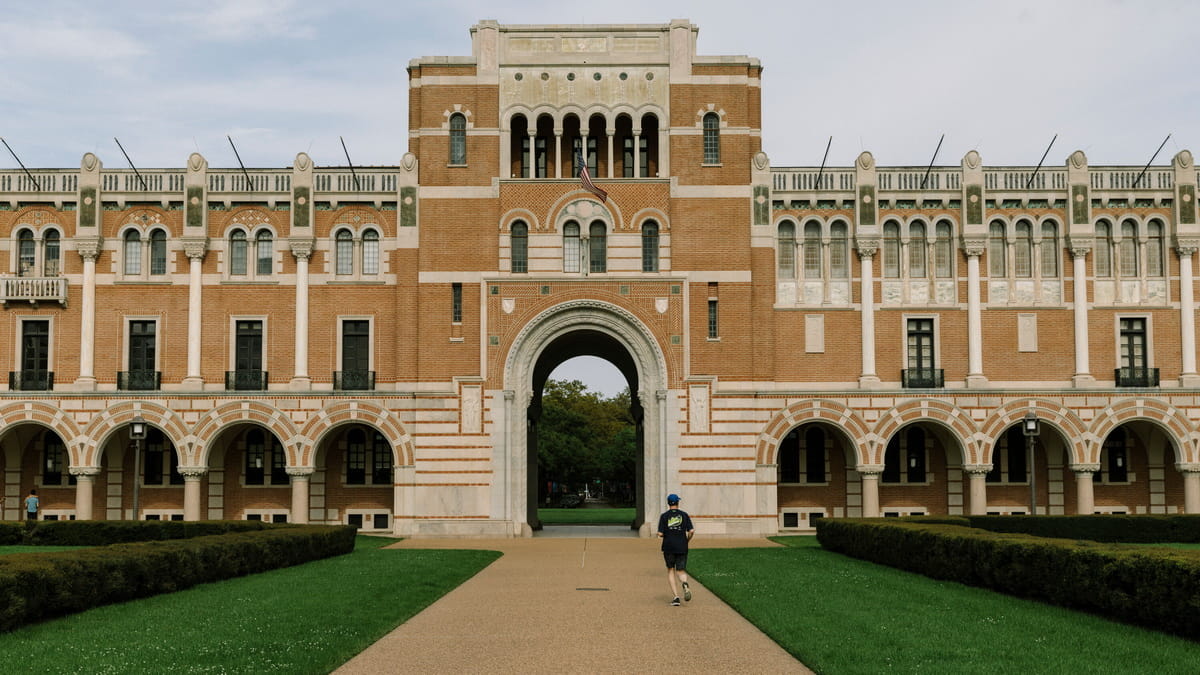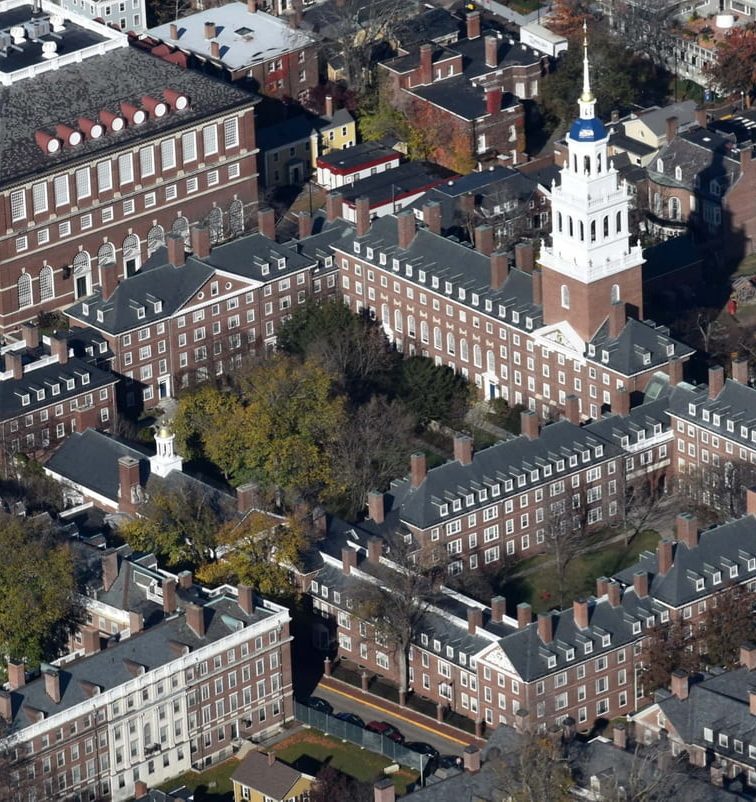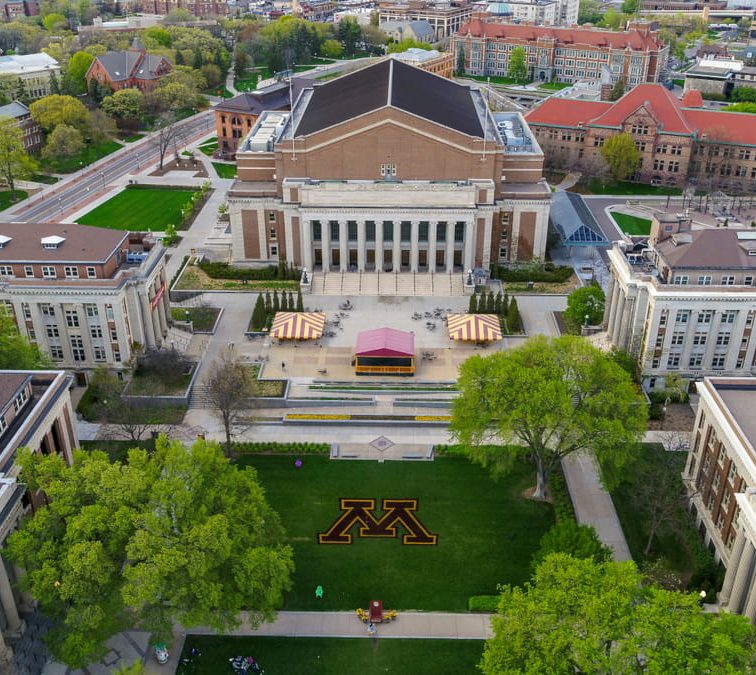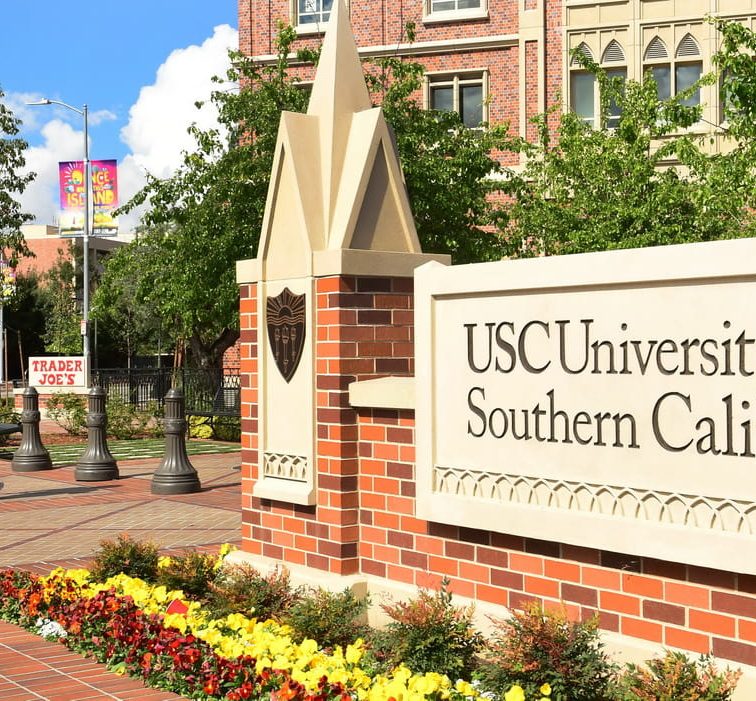Founded in 1912, Rice University was envisioned by William Marsh Rice, a Massachusetts businessman, as a premier institution in Houston, Texas. Known for its academic excellence and unique traditions, Rice stands on a 300-acre campus and features a symbolic owl mascot.
The university initially upheld a no-tuition promise, reflecting its commitment to accessible education. Its campus layout, influenced by Edgar Odell Lovett’s vision, showcases harmonious architecture inspired by global academic institutions. Delving deeper into the university’s intriguing history and culture reveals a treasure trove of fun facts about Rice University.
1. The Origin of Rice University’s Name: More Than Just a Grain
Rice University, initially the Rice Institute, was founded posthumously in 1912 following William Marsh Rice’s murder. His substantial bequest, aimed at creating a top-tier educational institute in Houston, Texas, laid the foundation for the university.
Named in his honor, the university embodies Rice’s vision of a distinguished educational institution.

William Marsh Rice statue at Rice University. Image: Wikimedia Commons
2. The Owl Mascot: A Symbol of Wisdom at Rice
Rice University’s mascot, Sammy the Owl, was named in 1917 after a playful incident involving its theft by rival students.
This event not only christened the owl but also established it as a symbol of wisdom and the university’s spirited identie.
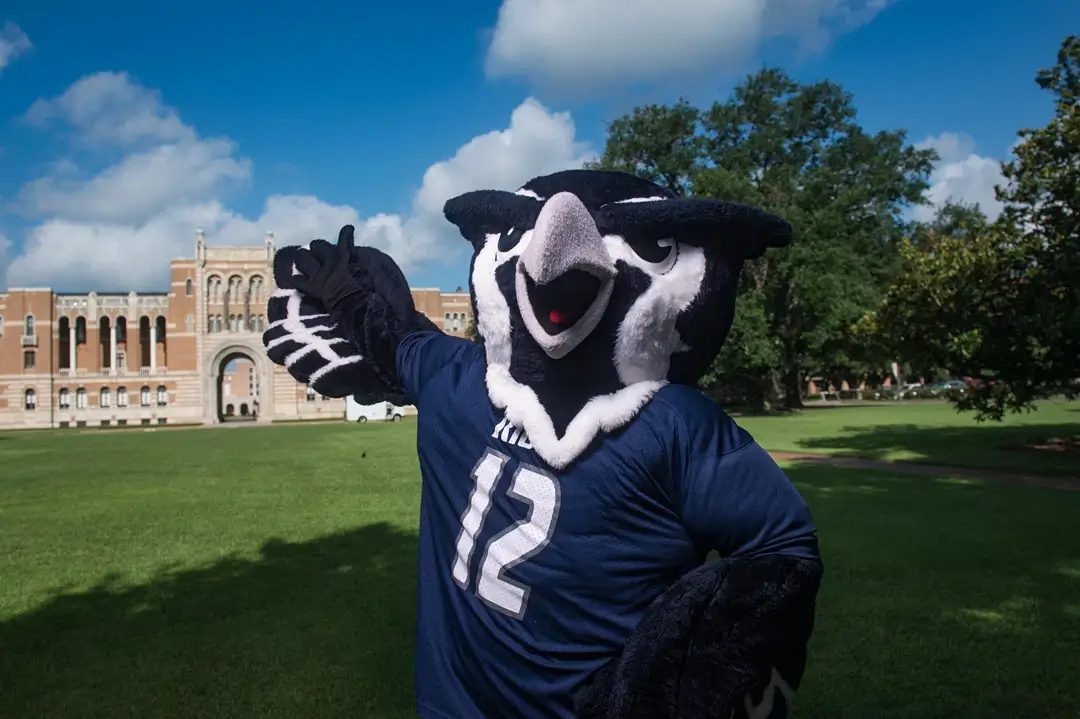
Image: rice.edu
3. Rice University’s No Tuition Promise: A Historic Decision
Rice University began with a pioneering no-tuition policy, fulfilling William Marsh Rice’s vision of accessible education.
This policy, which lasted several decades, was a testament to the university’s commitment to affordability and inclusivity in higher educarce.

Circa 1926 – View of the Administration Building at Rice University, located in Houston, Texas. Image: ctinsider.com
4. The Secret of the Campus Layout: Inspired by an Acclaimed Architect
The campus layout of Rice University was intricately planned by its first president, Edgar Odell Lovett.
His global travels inspired a cohesive architectural vision, influenced by the University of Pennsylvania and later enriched by the residential college system modeled after Cambridge University in Eource.
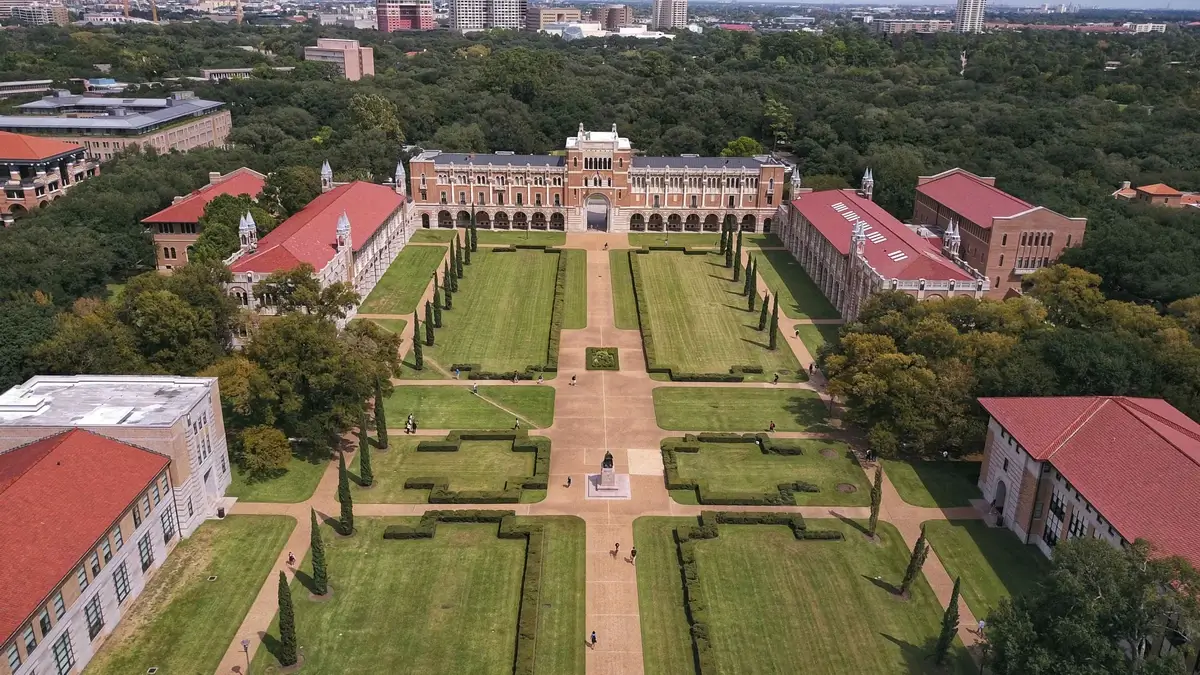
Image: x.com
5. Rice’s Unique Academic Calendar: Short Terms, Intense Learning
Rice University’s academic calendar stands out for its structure, offering a three-semester system. This system, approved by the Faculty Senate and based on a formulaic approach, includes Fall, Spring, and Summer semesters.
The distinct format of this calendar allows for a flexible and intensive academic experience, catering to the diverse needs of its student body.
6. The Beer Bike Tradition: A Unique Blend of Sport and Celebration
The Beer Bike is a long-standing tradition at Rice University, combining sports with celebratory elements. This event is more than just a race; it’s a hallmark of Rice’s culture, bringing together students, faculty, and alumni in a spirited and friendly competition that underscores the university’s community ethos.
It’s an annual event that’s eagerly anticipated on campus.

Image: ricethresher.org
7. Rice’s Impressive Faculty-to-Student Ratio: Personalized Education
Rice University boasts an impressive faculty-to-student ratio, ensuring personalized and in-depth education. This ratio allows for more intimate class settings and a tailored academic experience, fostering closer interactions between students and faculty.
Such a setting enhances the learning experience and provides students with more opportunities for mentorship and academic growth.
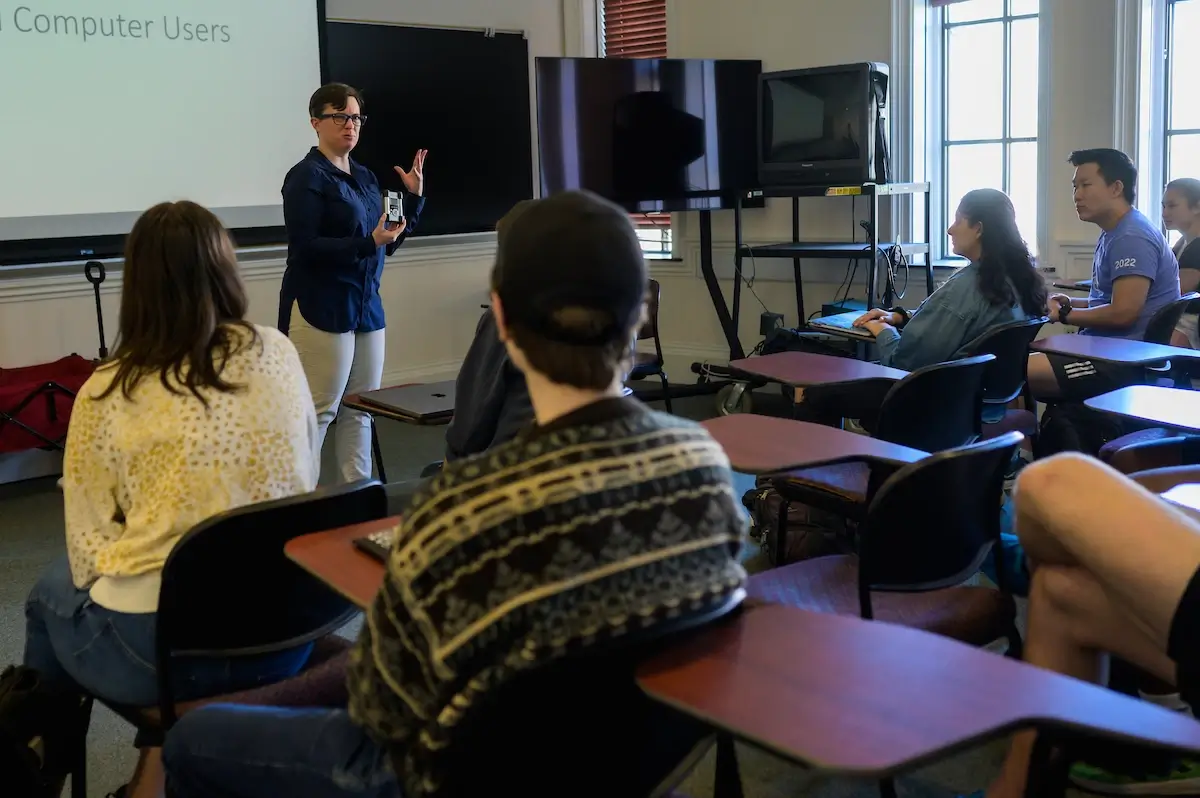
Image: rice.edu
8. Rice and NASA: A Partnership Beyond Earth
Rice University has a notable partnership with NASA, contributing significantly to space research and exploration. This collaboration extends beyond academic research, encompassing various initiatives and projects.
Rice’s proximity to NASA’s facilities and its strong focus on science and technology make it an ideal partner in advancing our understanding of space and related fields.

Image: rice.edu
9. The Stunning Campus Art: An Outdoor Gallery Experience
Rice University’s campus is renowned for its stunning outdoor art, offering an open-air gallery experience. The campus is adorned with various artworks, turning it into a hub for artistic expression and appreciation.
This integration of art within the campus landscape reflects Rice’s commitment to cultural enrichment and provides a unique aesthetic experience for all who visit.
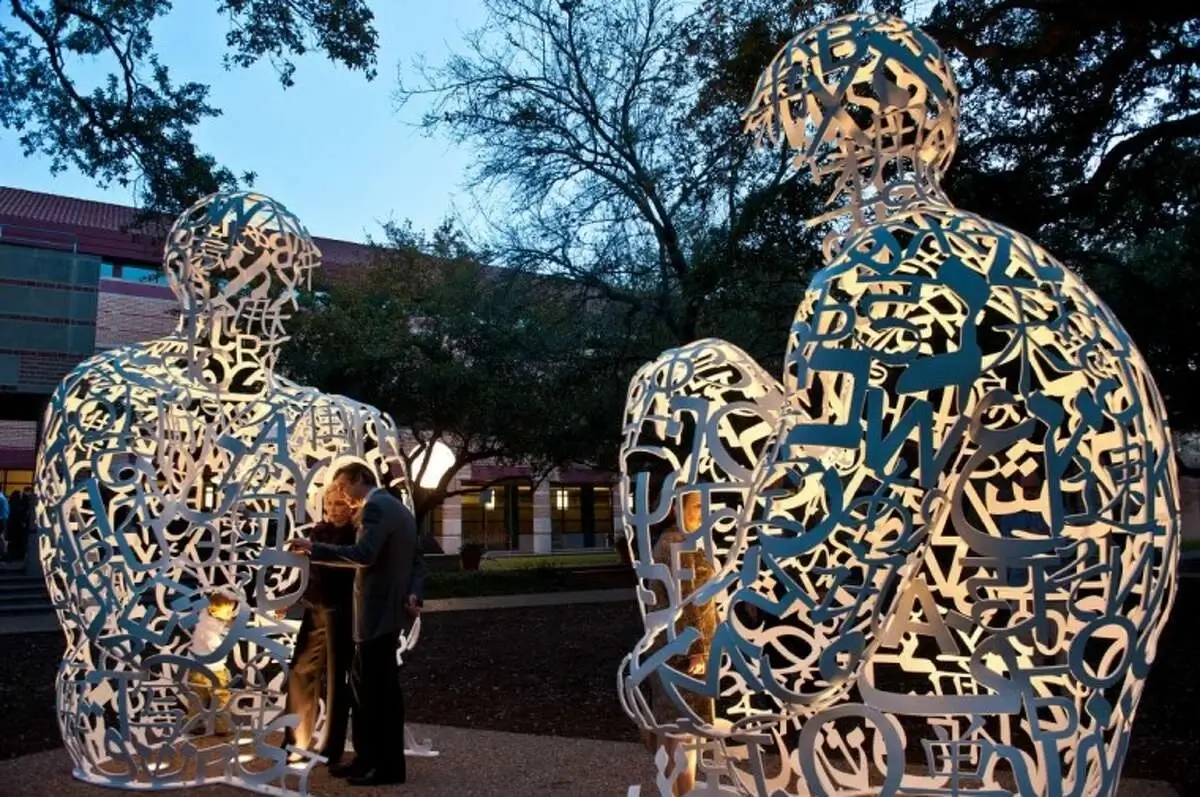
Image: houstonchronicle.com
10. Rice’s Residential College System: A Community within a Campus
Rice University’s residential college system is a distinctive aspect of student life, creating vibrant communities within the campus. Each of the 11 residential colleges at Rice is a microcosm, fostering a diverse tapestry of traditions, culture, and community. Students are randomly assigned to one of these colleges and remain members throughout their undergraduate years.
The system enhances the social and intellectual vibrancy of academic life by combining studies with social events, sports, student plays, and self-governance, overseen by faculty magisters and resident associates who live on-site.
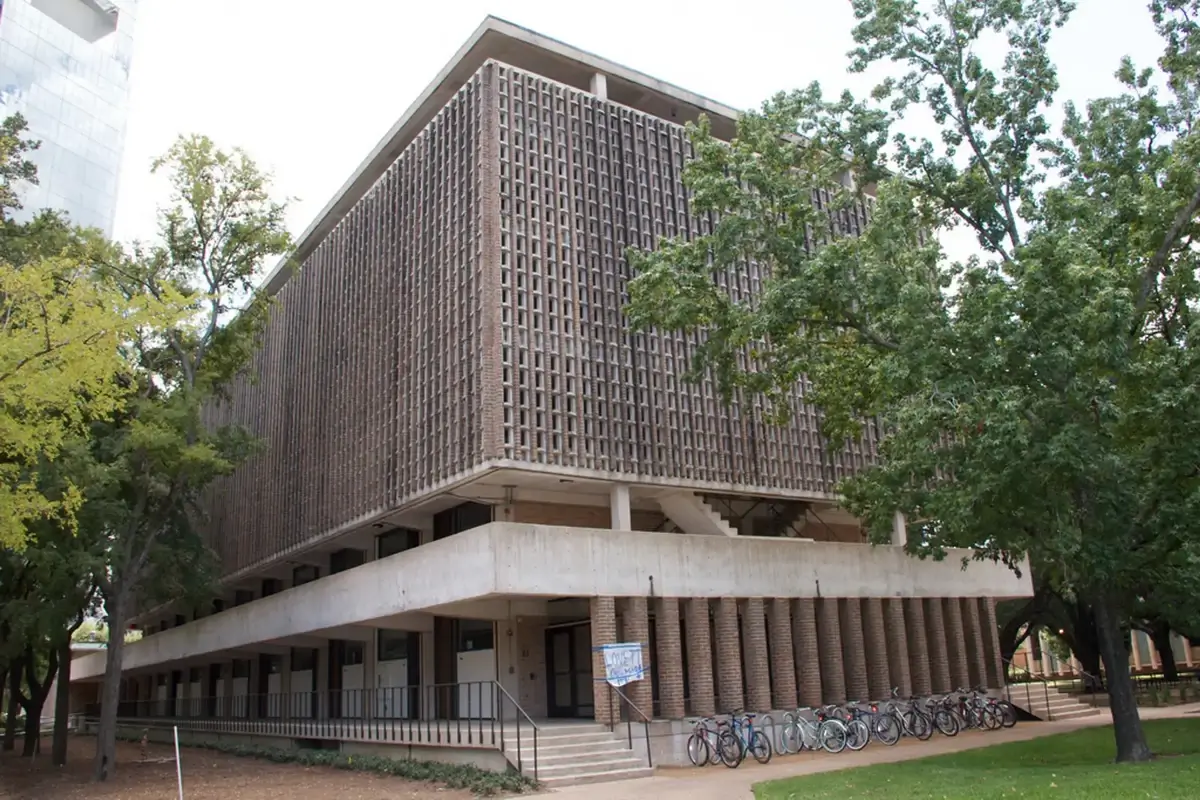
Lovett College | Rice University. Image: rice.edu
11. Baker 13: A Slippery Tradition of Camaraderie
Baker 13 is one of the most well-known and quirky traditions at Rice University, associated with Baker College. It involves students running around campus wearing nothing but shaving cream on the 13th and 31st of each month.
This tradition is a testament to the strong sense of camaraderie and fun among students, reflecting the unique and spirited student culture at Rice.

Image: dagospia.com
12. Rice’s Environmental Initiatives: Leading in Sustainability
Rice University’s environmental sustainability initiatives are comprehensive, targeting carbon neutrality by 2030. This goal includes enhancing green building standards, aiming for LEED gold certification, and increasing water efficiency.
Rice’s sustainability efforts are aligned with the UN Sustainable Development Goals, focusing on key areas like clean water (SDG 6), clean energy (SDG 7), and responsible consumption (SDG 12). The university has already made notable progress in areas like composting, recycling, and energy efficiency, reflecting its commitment to a sustainable and responsible campus.
13. Notable Alumni: From Presidents to Astronauts
Rice University has a prestigious list of alumni who have made significant impacts in various fields. Among them is Jim Bridenstine, a former Administrator of NASA and a U.S. Representative for Oklahoma’s 1st congressional district. Another notable name is Alberto Gonzales, who served as the 80th United States Attorney General.
The university’s alumni also include influential figures in business, such as John Doerr, a prominent venture capitalist at Kleiner Perkins. These individuals represent the diverse and impactful contributions of Rice University graduates to global leadership and innovation.

In the photo is Jim Bridenstine, a graduate of Rice University, known for his role as the 13th Administrator of the National Aeronautics and Space Administration (NASA) and former U.S. Representative for Oklahoma’s 1st congressional district. Image: nasa.gov
14. Rice’s Global Impact: Research and Collaborations
Rice University’s global research impact is marked by strategic collaborations and innovative projects across a variety of disciplines. One significant partnership is with the University of Edinburgh, where the inaugural Rice-Edinburgh Strategic Collaboration Awards funded 15 projects in areas like climate change and sustainability solutions, space innovation, and medical biotech. This collaboration demonstrates Rice’s commitment to broadening its global research footprint.
Moreover, Rice maintains a strong presence in fields like nanotechnology, materials science, high performance computing, and policy analysis. The university hosts over 40 research institutes and consortia, fostering interdisciplinary scholarship and serving as hubs for novel ideas and solutions.
These efforts illustrate Rice’s dedication to addressing complex global challenges through research and innovation.
15. The Lovett Hall: An Architectural Marvel
Lovett Hall, completed in 1912 as Rice University’s first building, is an architectural marvel by Cram, Goodhue, and Ferguson Architects. Its neo-Byzantine style, featuring Llano granite and Buffalo Bayou clay bricks, set a precedent for campus architecture.
Lovett Hall’s design embodies authority and power, reflecting Rice’s institutional legitimacy and establishing its distinctive architectural identity. This “Southern” academy envisioned by a “Northern” architect highlights Cram’s exploration of regional vernaculars and boldly asserts the institution’s singularity and cultural authority.
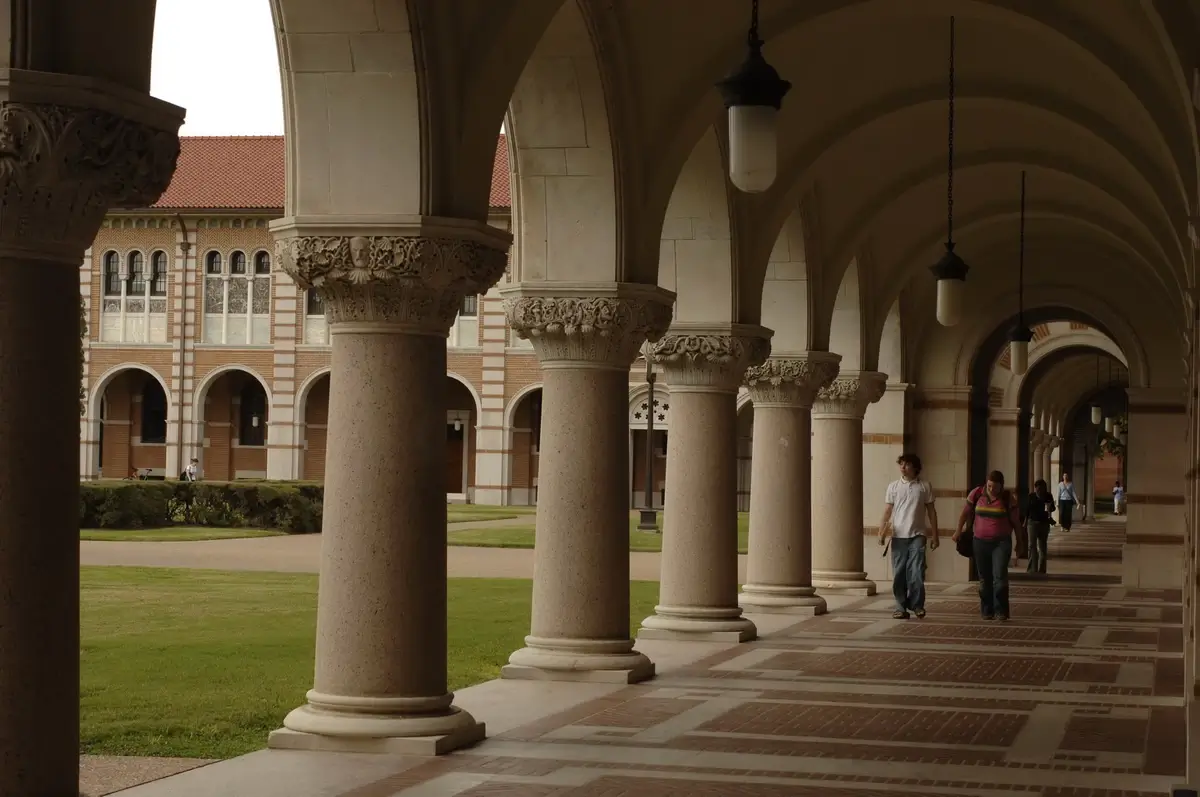
Image: rice.edu
16. Rice’s Pioneering Research in Nanotechnology
Rice University is renowned for its groundbreaking contributions to nanotechnology, a legacy that traces back to the discovery of the buckyball in 1985. This seminal discovery by Richard Smalley, Bob Curl, and Harold Kroto earned them the Nobel Prize in Chemistry in 1996.
Following this, Rice has been a powerhouse in research on carbon nanotubes, fostering interdisciplinary collaborations across engineering and natural sciences. The university’s focus areas include carbon nanomaterials composites, photonics, nanoplasmonics, and energy conversion and storage, positioning it at the forefront of nanotechnology research and innovation.

Rice University, Nanofab Cleanroom. Image: rice.edu
17. The Unique Rice University Marching Band: The MOB
The Rice University Marching Owl Band, known as The MOB, stands out for its unconventional and humorous style. Unlike traditional marching bands, The MOB is known for its satirical performances, often including skits and comedic elements in their shows.
This distinctive approach makes The MOB a unique and memorable part of Rice University’s campus culture, offering a refreshing twist on the conventional marching band format.
18. The Campus’s Hidden Tunnels: A Subterranean Mystery
Rice University’s campus harbors a 3-mile network of underground steam tunnels, initially installed in 1912. These tunnels, which snake beneath the campus, serve a utilitarian purpose, facilitating the heating, cooling, and powering of the university.
Over the years, they’ve also become a canvas for student art, with murals and names commemorating students’ times at Rice. These tunnels are not just functional but have become a unique aspect of Rice’s history and student culture.

Image: ricethresher.org
19. Rice University’s Interdisciplinary Approach to Medical Research
Rice University stands out in medical research, particularly through its Medical Humanities Research Institute. This unique institute aims to keep humanity at the forefront of healthcare, focusing on the human experience in health and illness. It engages in inclusive engineering, data science for health, and public health research.
Additionally, Rice’s Office of Research emphasizes tackling global health challenges. Key research centers include the Institute of BioSciences and Bioengineering and Rice360 Institute for Global Health Technologies. These entities collectively advance translational research, integrating humanistic perspectives with cutting-edge scientific innovation.
20. The Spectacular Wiess Tabletop: A Geological Wonder
The Wiess School of Natural Sciences at Rice University, named after Harry Carothers Wiess, has made notable contributions in the fields of geology and geophysics. The school’s history dates back to 1952 when Mrs. Olga Wiess established the Harry Carothers Wiess Chair of Geology. Since then, the department has grown significantly, with its geophysics specialty ranked 12th in the U.S.
The Keith-Wiess Geological Laboratories, a crucial part of the department, were completed in 1959 and have since undergone renovations. This history underlines the department’s long-standing excellence and influence in geosciences.
FAQ
What is unique to Rice University?
Rice University is known for its distinctive residential college system, which creates a small-college environment within a larger university. This system provides a supportive and close-knit community for students. Additionally, Rice’s beautiful campus with its consistent architectural style and the extensive green spaces in an urban setting make it unique.
What major is Rice University known for?
Rice University is renowned for its strong programs in science and engineering, particularly in areas like nanotechnology, bioengineering, and space science. It also has highly regarded programs in the humanities, music, and architecture.
What are the historical facts about Rice University?
Founded in 1912 as the William Marsh Rice Institute for the Advancement of Literature, Science, and Art, Rice University was established after the murder of its namesake, William Marsh Rice, who left his fortune to create the institution. The university is known for its small student-faculty ratio and was one of the first universities in the Southern United States to integrate racially.
When did Rice University allow black students?
Rice University began admitting black students in 1965, following a legal challenge that led to the desegregation of the university. This was a significant moment in the university’s history, reflecting broader social changes in the United States during the civil rights movement.
What are students of Rice University called?
Students of Rice University are commonly referred to as “Owls.” This nickname comes from the university’s mascot, Sammy the Owl, which symbolizes wisdom and knowledge.
What is Rice University famous alumni?
Rice University has a number of notable alumni who have made significant contributions in various fields. These include Peggy Whitson, an astronaut and former Chief of the NASA Astronaut Office; Howard Hughes, the famous business magnate, investor, pilot, and film director; and John Doerr, a prominent venture capitalist.


